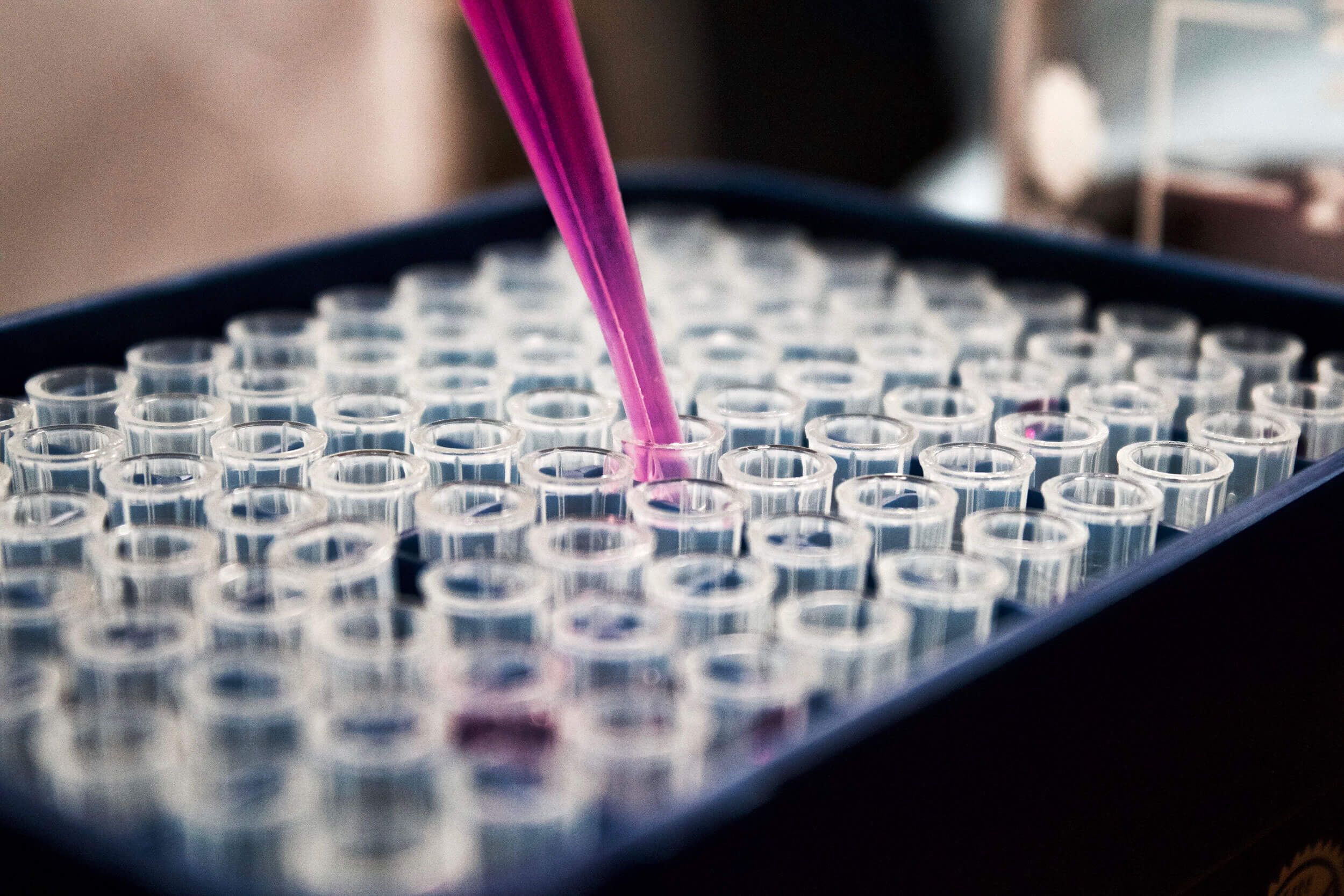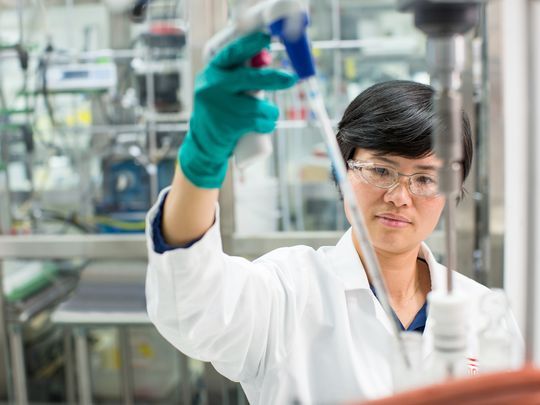DowDuPont’s $200 Million Investment in Delaware
13 JUNE, 2018

DowDuPont officials and Delaware politicians are beaming about scores of newly designed laboratories housed within an Experimental Station building that received a $200 million facelift during the past year.
Gov. John Carney said the investment demonstrates that DuPont will continue to drive Delaware’s economy, even after it spins off from the DowDuPont holding company in June of 2019.
DowDuPont to move up to 150 jobs to the Experimental Station, near Wilmington
“Now, DuPont is obviously going to have a smaller footprint in terms of employees in our state than it did when I was growing up,” he said, “but when you talk about what drives the economy; it’s research, development, science, and technology.”
Before a ribbon-cutting event on Friday, Carney was among state politicians given a tour of the renovated building, which featured oxygen-free chambers to study gut bacteria and high-tech sequencers to analyze microbial data.
The building is the new headquarters of DowDuPont’s consolidated Industrial Biosciences division — a business that specializes in creating enzymes for a variety of products.

DowDuPont’s renovated Industrial Biosciences headquarters at the Experimental Station could be a signal of future investment in the state by the venerable company. (Photo: Courtesy of DowDupont)
The organic catalysts allow laundry detergent to function in cold water. They keep bread from going stale. And, they can create healthy bacteria in the stomachs of chickens.
They also bring in $2.1 billion annually for DowDuPont.
DowDuPont profit hits $1.1 billion on higher demand and increased prices Company officials say the new facility will give the firm an edge against competitors in a race to recruit top talent.
“Our job is to attract the best and brightest scientists in the world,” DuPont facilities director Chris Koelsch said. “So that’s what we’re doing.”
Today, the Experimental Station, which has been the center of the DuPont’s research and development for generations, has 2,000 employees. The number includes 400 people who work for companies that rent space at the property.

DowDuPont’s renovated Industrial Biosciences headquarters at the Experimental Station. (Photo: Courtesy of DowDupont)
By 2020, the facility will house 2,600 people, an increase that will include transfers coming from a former-Dow Chemical facility in Collegeville, Pennsylvania.
“There will be some growth, some of which is coming in from out of state, and some of which is new hires,” said Marc Doyle, chief operating officer for the company’s Specialty Products Division. “We’re having to add some roles to meet the demands both from growth from the economy as well as establishing the standalone company.”
The $200 million spending on the renovated building also is significant for the company because it is a shift from a decade of turmoil for DuPont.
Past years were marked by layoffs of thousands of long-term employees, a vicious proxy battle with activist investors, and the shedding of non-core assets, such as the Hotel DuPont and the DuPont Country Club.
In those recent years, Koelsch said, DuPont failed to sufficiently fund all of its needed infrastructure. That is changing, he said.
“There was some under-capitalization in years past,” he said. “We got a $200 million investment to start the journey here on a transformation.”
Though DowDuPont is investing in state-of-the-art research facilities, its CEO Ed Breen last month said the company has decided to avoid large research and development projects. Those “moonshots,” Breen said, cost the most money and take multiple years of research.
“When I got to the company, we killed almost all of what I call the moonshot projects,” said Breen while speaking at the Bernstein Strategic Decisions Conference in May.
Breen replaced Ellen Kullman as CEO in 2015, following a battle with investor Nelson Peltz, which was largely over the size of the venerable company’s significant investments in R&D.
One project Breen cited as too large and too risky was the company’s $225 million endeavor to produce ethanol from corn stalks. DuPont in 2017 put up for sale the project’s center of operations in Iowa.
Breen submitted a plan to the company’s board in early May, which laid out its leaner R&D efforts.
“Most of our projects now are $10, $20, $30 million,” he said. “They’re safe. It’s hard to blow those. It’s easy to track them. They’re just less risky.”
DuPont facilities director Chris Koelsch on Friday describes multiple renovations planned for the DuPont
DowDuPont formed last August after a $150 billion merger between Delaware-based DuPont and Michigan’s Dow Chemicals. In May, the company reported net sales for the first quarter of 2018 at just over $21.5 billion, up 5 percent from the two companies operations a year earlier.
By 2019, three companies will be formed from the merged entity. First to leave will be the company’s Material Sciences Division around April of next year. It will be headquartered in Michigan.
The Specialty Products and Agriculture divisions, both of which will be based in Delaware, will separate shortly thereafter.
Specialty Products will be given the name DuPont, while agriculture will be called Corteva Agriscience.
Prior to the split, Materials and Agriculture each is shedding over $1 billion in costs, with Specialty’s expected savings to come in just under $1 billion.
The company has not revealed who might lead the new companies. Doyle, who is the head of Specialty Products, declined to say if he will become CEO of the new DuPont.
“We’ll see. I’m just focused on trying to get the company set up for success,” he said.
Asked about which companies will take on DuPont’s billions of dollars in pension liabilities, Doyle said, “We’re working on it.”
“It’s a really important subject and we’ll have more to say later this year,” he said.
Contact Karl Baker at kbaker@delawareonline.com or (302) 324-2329. Follow him on Twitter @kbaker6.
Newsletter Sign Up
Stay Up To Date With Delaware